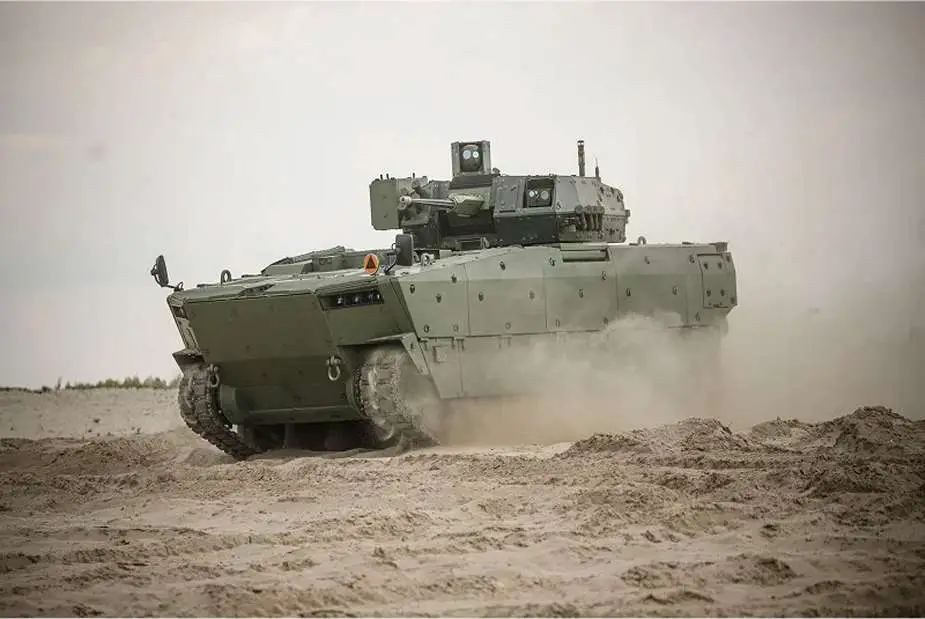Breaking news
Borsuk IFV overcomes technical challenges and nears test completion.
The Infantry Fighting Vehicle (IFV) Borsuk is heading towards the successful completion of its trials, despite a slight delay in the initial schedule, reports Defense24. The tests, originally planned to conclude last year, were extended by a few months. However, the news is now hopeful for this project.
Follow Army Recognition on Google News at this link

The Borsuk is a Polish infantry fighting vehicle in final trial. (Picture source: Huta Stalowa Wola)
The Borsuk IFV encountered minor problems at the beginning of its development, including overheating of the final drives, possibly related to an increased load on these components. This situation was compared to the challenges faced by the Panther Ausf.D during its test phases. Despite these obstacles, the Borsuk's qualities, notably its good ballistic protection for a weight of 28 tons and its modular structure, remain undeniable assets.
The Borsuk's modular structure not only provides good ballistic protection but also offers the flexibility to replace foam displacement modules with heavy armor panels. This adaptation would allow for further increased ballistic protection, albeit at the expense of amphibious capability and an increase in the vehicle's weight.
This feature is particularly relevant for a vehicle intended for varied operations, offering the possibility to adjust the level of protection according to the specific needs of the mission. The need to strengthen the final drive was identified following these adjustments.
The vehicle can accommodate a crew of three and carry between seven to eight soldiers. In terms of dimensions, the Borsuk measures approximately 7.5 meters in length, 3.5 meters in width, and 2.7 meters in height, with a base weight of about 25 tons. When equipped with additional armor, its weight can reach up to 40 tons.
The Borsuk's main armament includes a 30 mm cannon, capable of firing about 200 rounds, and it is also equipped with Spike LR anti-tank guided missiles. A 7.62 mm machine gun completes its arsenal, providing a defense capability against infantry threats.
In terms of mobility, the Borsuk is powered by an MTU 8V199 TE120 diesel engine, developing approximately 820 horsepower, which allows it to reach maximum speeds of 70 km/h on the road and 8 km/h in water. Its amphibious capability enhances its versatility on the battlefield, enabling troops to cross bodies of water without the need for additional preparation. The vehicle has a range of about 600 kilometers.
The Borsuk is also capable of climbing slopes at 60%, side slopes up to 30%, and overcoming vertical obstacles up to 0.7 meters. It can also cross trenches about 2 meters wide and ford bodies of water up to 1.2 meters deep in amphibious mode.
The effective resolution of these technical problems demonstrates the development teams' commitment to optimizing the Borsuk IFV before its deployment. The attention to these details, although delaying the initial schedule, is crucial to ensure that the vehicle meets the rigorous requirements of the modern battlefield.

























